For the longest time, people shopping in the compact crossover segment have by-and-large picked between a few of the top options. However, brands like Hyundai, are increasingly getting people’s attention with flashy designs and tons of standard equipment. So today we want to explore that, by pitting the 2024 Honda CR-V vs. Hyundai Tucson. At the end we will see if its best to choose the OG or go for the alternative. But, without further ado, let’s get started!
Pricing and Equipment
So, before we figure out if its best to have a bold or italic H on the front of your next CUV, let’s quickly skim through the trims and pricing of these two.
Starting with the new CR-V, we have the new trim added to the lineup in 2024, the Sport L. This model comes standard with loads of equipment, and all-in it rings in at $39,630.
CR-V (Sport-L Hybrid AWD): $37,850 | Options: +$455 | Destination: $1,325 | Total: $39,630
For the Hyundai Tucson, their trims are spaced out substantially, so the closest trim to the CR-V Sport L is the Limited. It has a lot of value packed in, as expected, but the total price will be a bit higher at $40,800.
Tucson (Limited Hybrid AWD): $39,465 | Options: +$0 | Destination: $1,335 | Total: $40,800 (pricing has been updated for 2024)
Now this is going to be an objective comparison. We have done our best to weigh the points awarded throughout in major and minor categories, but at the end of the comparison we will sum up with our thoughts and account for that small price difference. With that being said, let’s get into the meat and potatoes!
Exterior Design
So as soon as you walk up to these two models, you will immediately notice that they have vastly different design philosophies. The new CR-V has gone with a more conservative design for this generation, while the Tucson is one of the more unique crossovers in the compact segment. Your design preference will likely depend on how much you like to stand out, so we’re not going to wade into that.
But we will get into the front lighting, which is an extremely distinct layered DRL that is also part of the grille in the Hyundai. The headlights themselves are projector LED’s, and the CR-V’s are slightly less premium reflector LED’s. Neither of them have fog lamps.
Continuing to the sides, both models continue to grow with each successive generation and are now over 180 inches long. A noteworthy difference, is that the Tucson has one-inch larger wheels, at 19’s instead of 18’s.
Length: 184.8-inches (CR-V) | 182.3-inches (Tucson)
Heading out back, again the overall exterior themes couldn’t be more different, with tons of angles and lines in the Tucson and a conservative look in the CR-V. Features-wise we also have some differences. The Tucson protects its rear wiper under the spoiler, they both have partial LED taillight clusters, and only the CR-V has dual exposed exhaust outlets.
For those of you interested in towing small trailers, the Tucson can handle up to 2,000 lbs vs. 1,000 in the CR-V.
Additional Features
Now checking out some of the individual odd and end features, both of their mirrors have heating and blind spot monitoring, and both models come standard with all of the available active safety features no matter what trim you choose.
Another difference is warranty coverage. Hyundai continues to offer the longest warranty in the business and they also extend complimentary maintenance coverage an additional year beyond what Honda includes.
But you will spend far more time on the insides than gazing at the exteriors, so let’s go ahead and get into that!
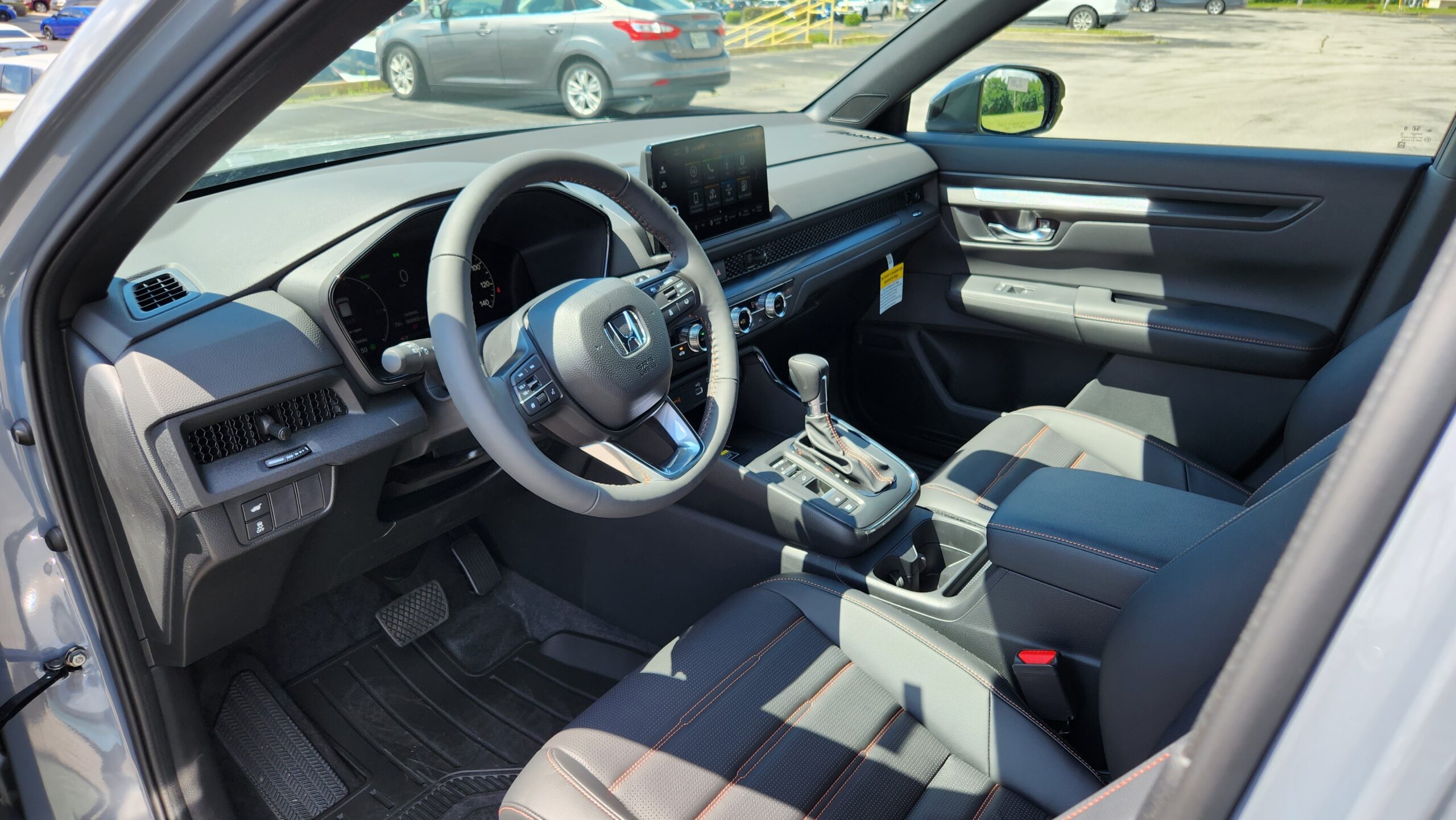
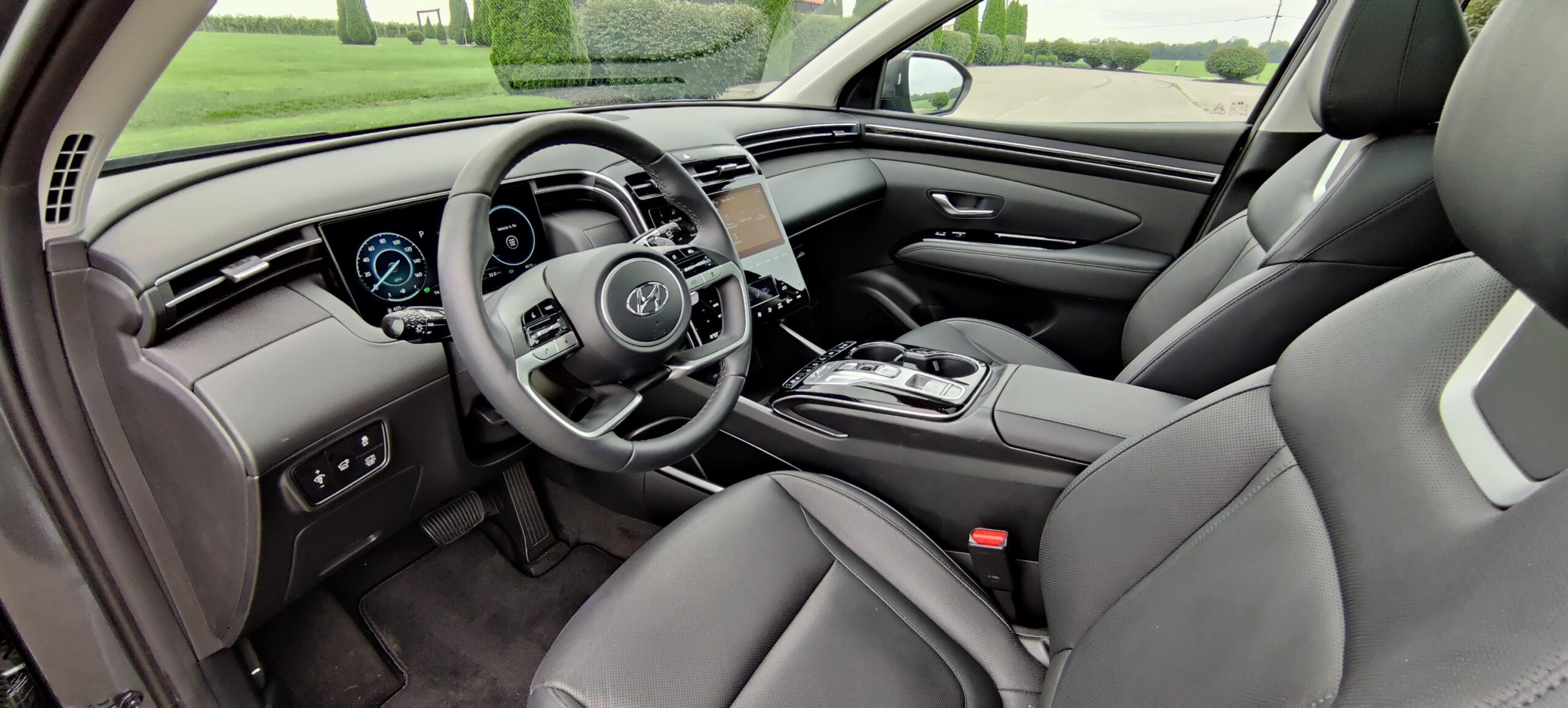
Interior Design
So, approaching both models, you will find smart entry systems with remote start, as expected. The Tucson’s fob has a couple extra buttons because it has the Smart Park system, which allows you to remotely pull the vehicle into and out of tight parking spots.
Now once you open up the doors, again you will find designs that are starkly different from each other. The seats are mostly the same though, both having real leather, 10-ways of power adjustment, memory and heating. The Tucson also includes ventilation, which is unavailable on the CR-V.
Once we actually climb inside the cabins, we can check out the broad category of material quality. In this area, they really feel very similar with a nice mixture of soft touch plastic, leatherette and piano black surfaces. Both also feel very solid to the touch, so we will declare this section a tie.
Once you fire the two crossovers up, you’ll see a half digital and half analog gauge cluster on the Honda, but a 10-inch full digital cluster in the Tucson. In addition to extra design customizations, the Tucson’s screen also allows for their blind spot camera system to work, which is something Honda pioneered but no longer offers.
Neither of them will offer head up displays.
Pulling back to the steering wheels, they are both leather wrapped but not heated on the Sport L CR-V.
Storage and Technology
But moving on to the important aspect of interior storage, even though Hyundai gives Honda a run for their money, it’s still the CR-V that comes out on top as usual. Its center console is the largest in the class, and its front bin is also larger than the CR-V’s as well.
Taking a look at the shifters next, CR-V has a traditional one and the Tucson a push-button one. Regardless of your preference, when you go into reverse, you will probably notice the lack of a 360-degree camera system in the CR-V, which is something not offered on this generation.
Moving up to the middle of the dashboard, both have dual zone automatic climate controls, although the controls are harder-to-use touch capacitive ones on the Tucson.
And before we talk about the displays, let’s go ahead and sample the audio systems. While they’re both 8-speaker sound systems, the Tucson’s is a Bose at this price point.
Tucson: 8-speaker Bose Premium audio
CR-V: 8-speaker audio
Alright, so back to those displays. These upper end versions both come with the largest displays offered in the lineup, 9-inches in the CR-V and 10.25 inches in the Tucson. That gives the Hyundai about 12% more screen real-estate.
Outside of the size though, it’s the Honda that has the advantages. It has Wireless Apple CarPlay and Android Auto, while the Tucson still requires you plug in to access those systems.
As we wrap up the front of the cabins, there are still several differences left. Both models have auto-dimming mirrors but only the Hyundai has the built in HomeLink universal garage openers.
Additionally, the new generation of CR-V has opted not to add a panoramic sunroof, which is something the Tucson does include.
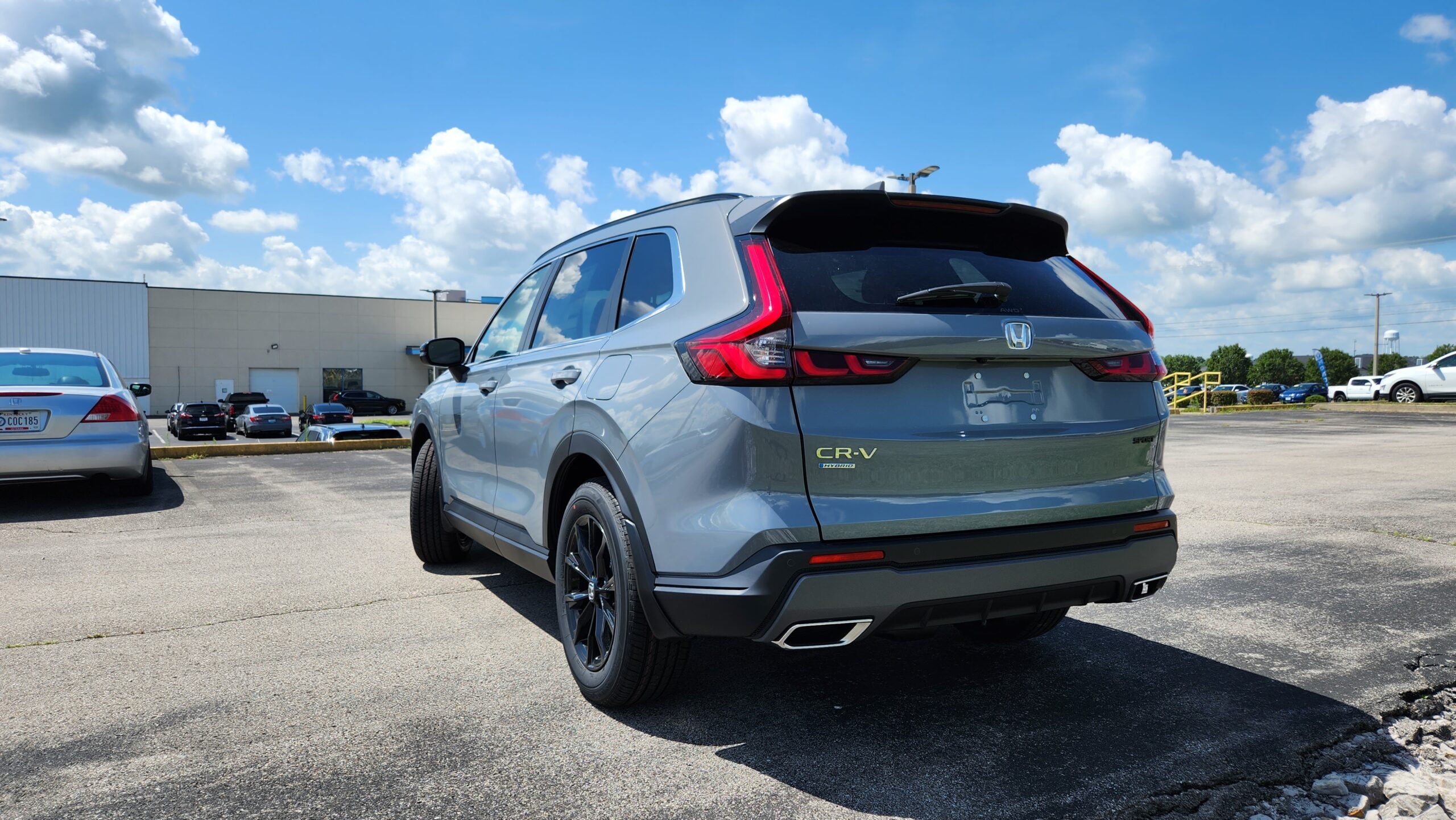
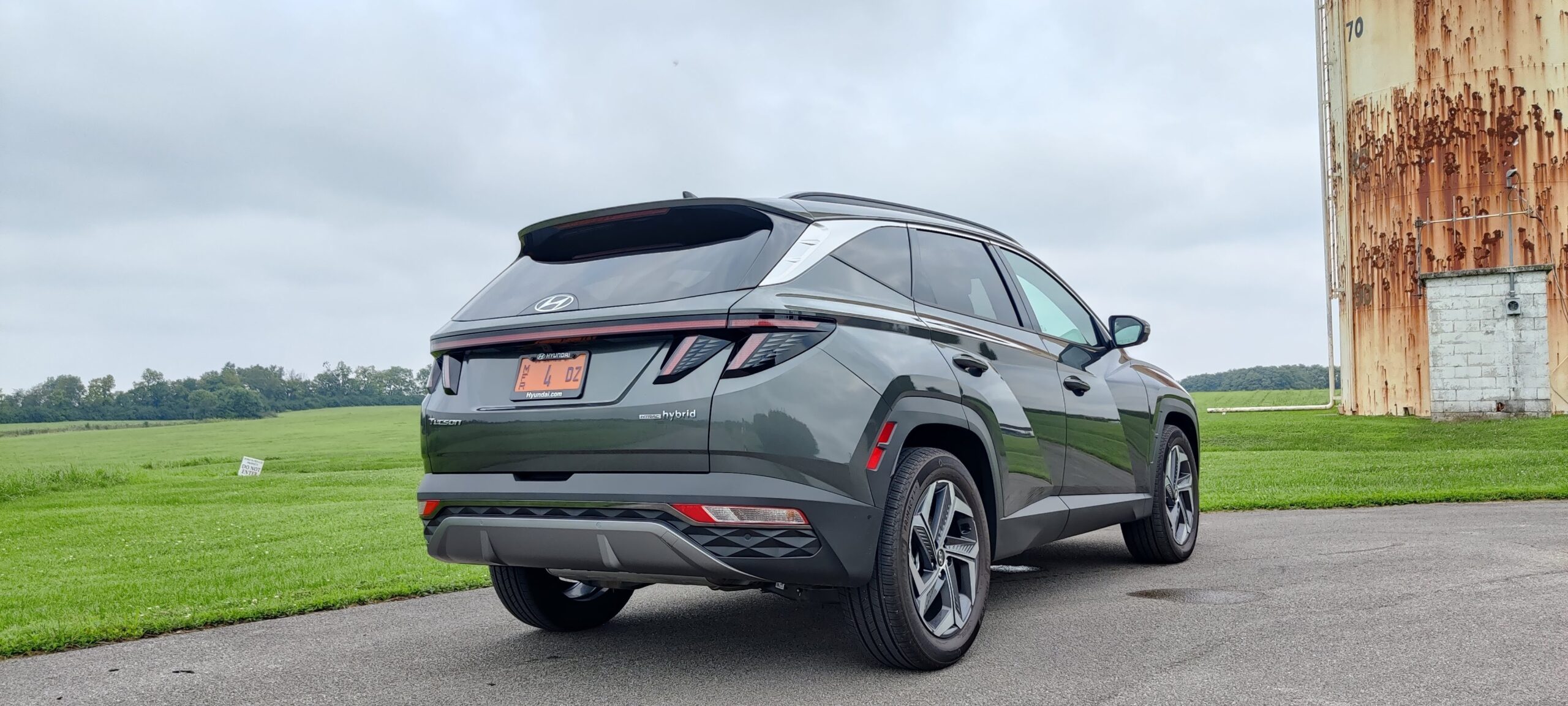
Rear Seats and Cargo
Now heading to the rear areas, things begin to heat up even more. If you know anything about the CR-V, it’s probably that its very large on the inside, and this new generation continues that trend. The thing is, the Tucson has grown a ton as well, so rear space is nearly identical now.
CR-V: 41.0 inches of legroom | 38.2-inches of headroom
Tucson: 41.3 inches for legroom | 39.5-inches headroom
One advantage when it comes to rear seat comfort is that the CR-V’s seats recline further than the Hyundai’s with 8 levels of recline for max comfort.
As far as the features back here, both models have rear vents and 2 USB-C ports for charging devices, [p] but only the Tucson has heated rear seats.
Moving out back, the two crossovers have hands-free power tailgates, and once they open up, the rear seat situation repeats. CR-V technically is still the largest option in the segment but with both the seats in place and folded, it is less than the 5% advantage required to score a point.
CR-V: Behind 2nd row: 39.3 cubic feet | Max: 76.5 cu.ft
Tucson: Behind 2nd row: 38.7 cubic feet | Max: 74.8 cu.ft
Alright, we’re done with the interiors now, so now let’s take this fight out to the streets!
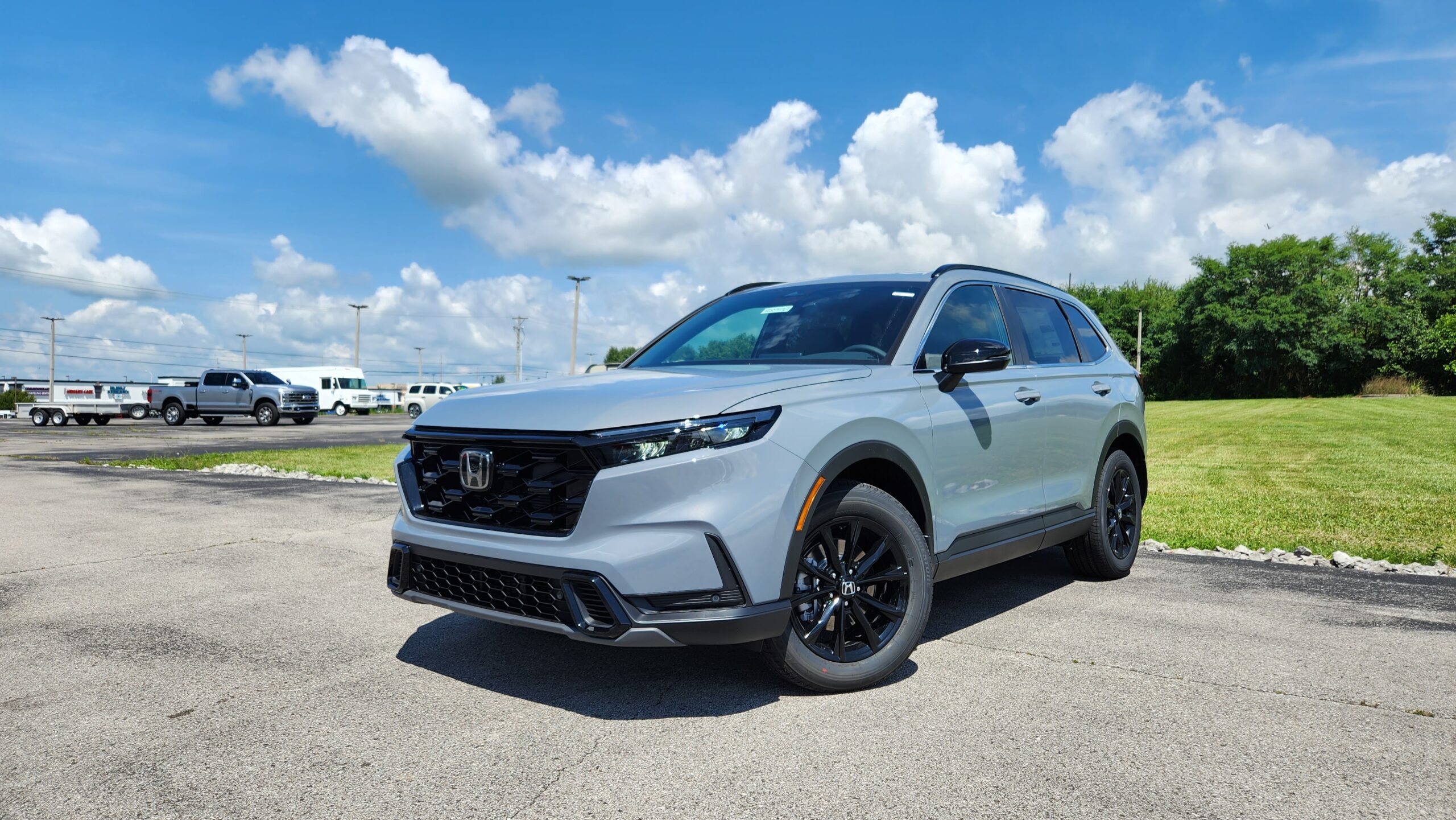
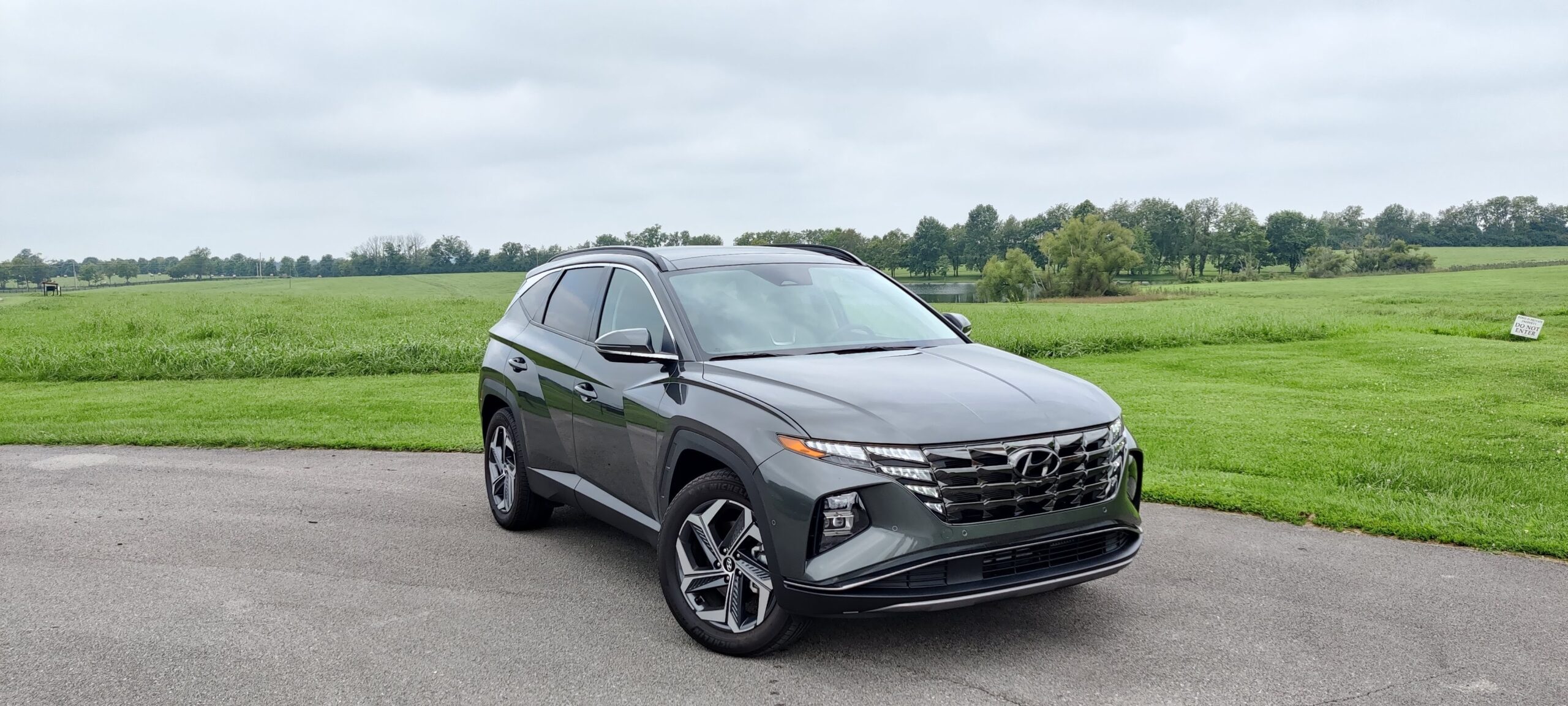
Powertrain
It’s very hard to beat the features Hyundai stuffs into their vehicles, but let’s talk about the powertrains. All of the Sport trim levels of the CR-V now come standard with the Honda’s 2-motor hybrid system. This system uses a 2.0L 4-Cylinder combined with electric power to make 204 hp. The Tucson also offers a hybrid model, but it is quite different with a 1.6L turbocharged 4-cylinder forming the foundation and 226 total system HP. While the Hyundai does have more power, it’s the Honda that is actually quicker to 60 MPH.
0-60 Times (MotorTrend Tested):
- Tucson Hybrid: 7.8s
- CR-V Hybrid: 7.6s
CR-V: 2.0L I-4 + Elec: 204 hp
Tucson: 2.5L I-4 + Elec: 226 hp
Driving Impressions and fuel economy
Now these hybrid systems are quite different from each other in terms of the engineering, and the choice of transmission is why we see the more powerful model accelerate slower. Unlike all the rivals, including the CR-V, Hyundai uses a 6-speed automatic transmission instead of a CVT. This gives it a more traditional feel that most people prefer, but I will point out that the Honda has a shift simulation to somewhat replicate that feel.
Now speaking of sound, once the engines have quieted down after acceleration and you’ve made it up to highway speed, you’re probably wondering how quiet they are. In our sound decibel readings, we found that the Tucson Hybrid was quieter and likely is using more sound deadening materials throughout.
CR-V: 57.0 dB @ 55 MPH
Tucson: 54.7 dB @ 55 MPH
Now as far as other driving characteristics, neither of them is designed to be sporty per-say, but Honda bakes in more emphasis here. The CR-V exhibits nice body control and steering that is fast, accurate and not too light.
They both also ride very nicely and absorb all but the largest road imperfections, but we would give the slight edge to the CR-V with its smaller wheels.
But the ultimate test of a hybrid systems worth is what kind of fuel economy it achieves, and both far exceed their traditional gas counterparts. They are both rated at 37 MPG combined. The Tucson did not quite achieve that in our week-long test, and we look forward to testing out the CR-V’s real-world MPG over a week very soon.
CR-V Hybrid: 40/34/37 MPG
Tucson Hybrid: 37/36/37 MPG
SO who is the better H??
So, there you have it; the objective winner is the Hyundai Tucson, but who is “your” winner? Well, the Tucson should be your winner if you…
Tucson:
- Obviously, value having the most possible features
- Extra luxury and tech that CR-V doesn’t offer, like 360-camera, digital gauges, panoramic roof, vented seats, heated rear seats
And the CR-V should be your winner if you value…
CR-V:
- The maximum possible amount of space
- Faster 0-60 with better handling
- Honda’s reputation of reliability
Now we want to know your opinions, so make sure to head to the comment section and let us know which one you would pick! Our sense, based on comments we have read, is that a lot of people may favor the intangible characteristics of reliability over the tangible features advantage in the Hyundai, so we’re curious to see what you have to say about this!
Anyway, thanks for joining us for another Car Confections Comparison, and be sure to watch the full video below to get an in-depth view of these two vehicles. Who would you pick out of these two? Put your thoughts in the comments below!

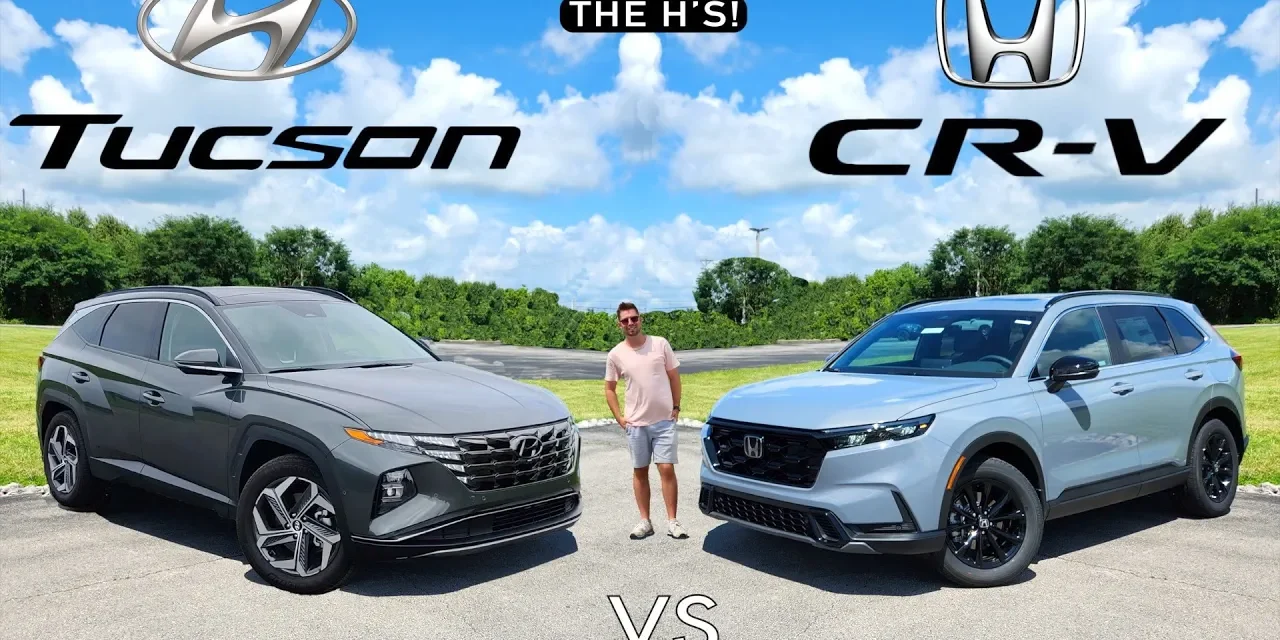
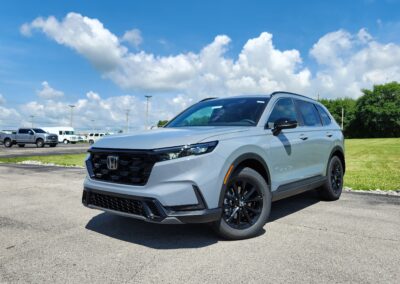
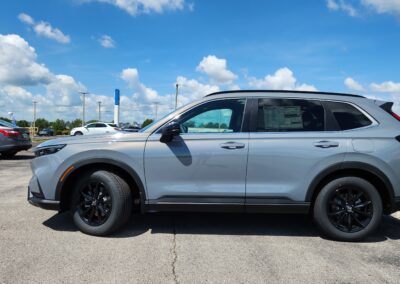
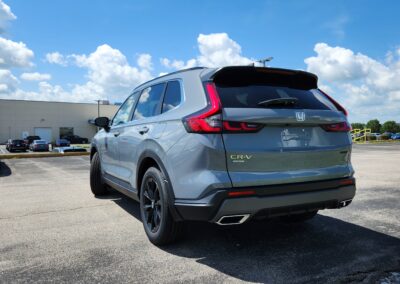
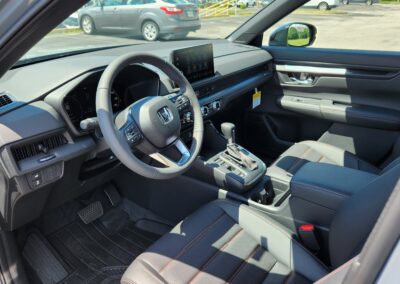
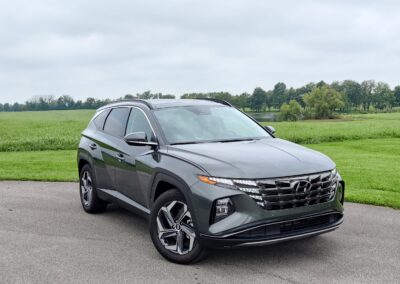
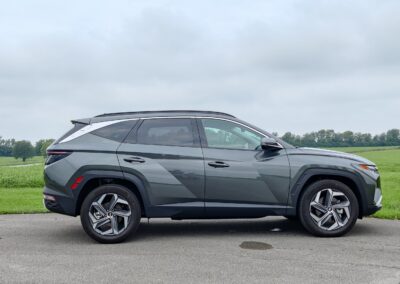
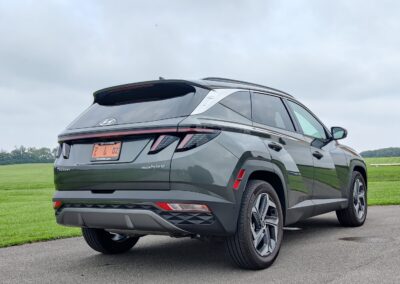
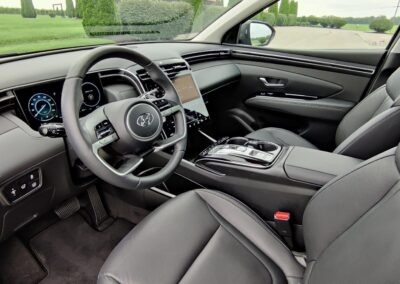
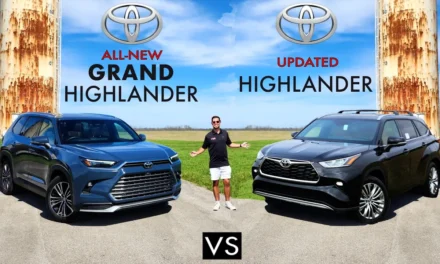
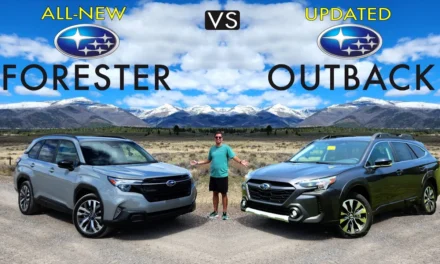
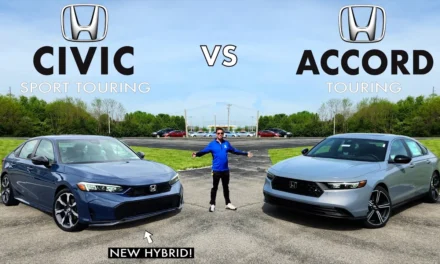
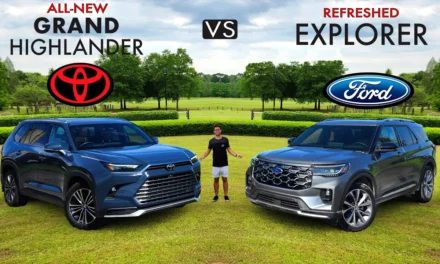




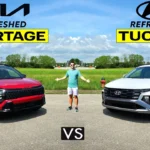

Recent Comments